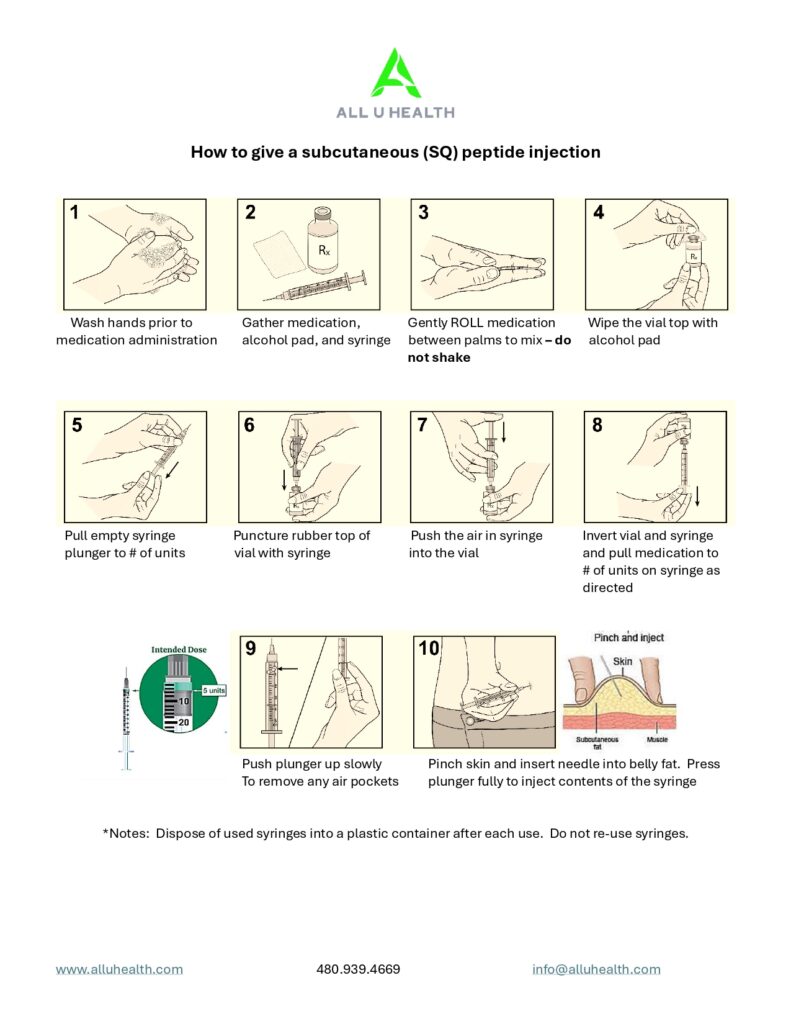Getting an injection at your doctor’s office while inconvenient does not make one think about the injection, but giving yourself an injection at home isn’t so routine. When you inject medicine under the skin, but not into a muscle, it’s called subcutaneous. This technique is commonly used in both clinical and home settings due to its ease, safety, and effectiveness for certain types of drugs. Medication given this way is usually absorbed more slowly than if injected into a vein, sometimes over a period of 24 hours. This type of injection is used when other methods of administration might be less effective. Some medications, such as insulin, peptides or blood thinners, are injected under the skin. They are usually given in the belly or the thigh. For example, some medications can’t be given by mouth because acid and enzymes in the stomach would destroy them. At first, you may be a little nervous about giving yourself a subcutaneous injection. But after you do it a few times, you will get the hang of it.
One of the primary reasons for using a subcutaneous injection is the need for slow, sustained absorption of medication. The fatty tissue under the skin has fewer blood vessels than muscle, which results in a slower uptake into the bloodstream. This makes it ideal for drugs that benefit from a gradual release. Common examples include insulin, blood thinners like heparin, and certain hormones such as GLP-1 receptor agonists (e.g., Tirzepatide or Semaglutide used for diabetes and weight management).
Subcutaneous injections are also commonly used for vaccines, allergy shots, and biologic drugs used to treat autoimmune diseases such as rheumatoid arthritis or psoriasis.
Below is a step-by-step guide on how to perform the SubQ injection. If you have any questions, feel free to reach out to our medical team to have them answered.
